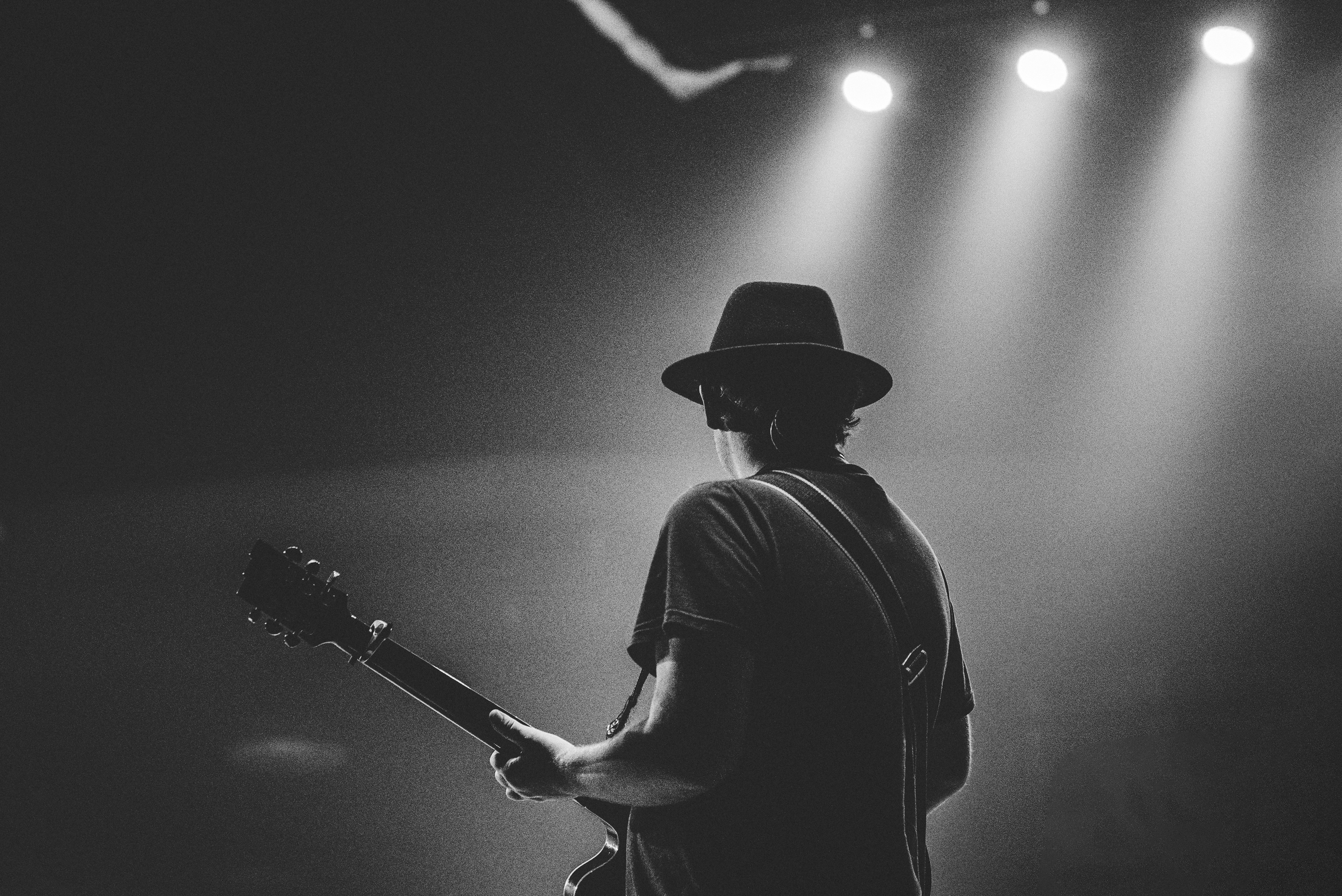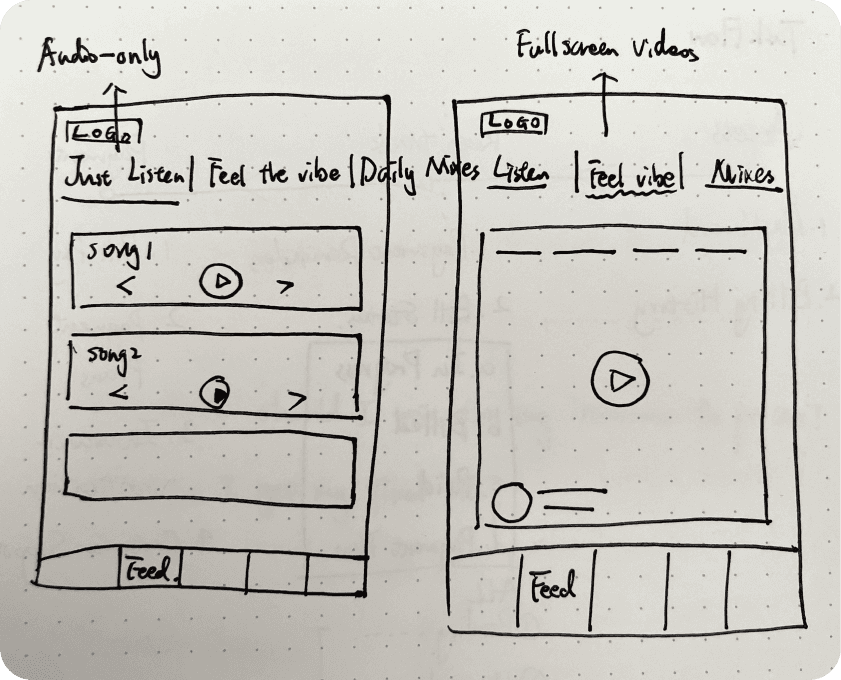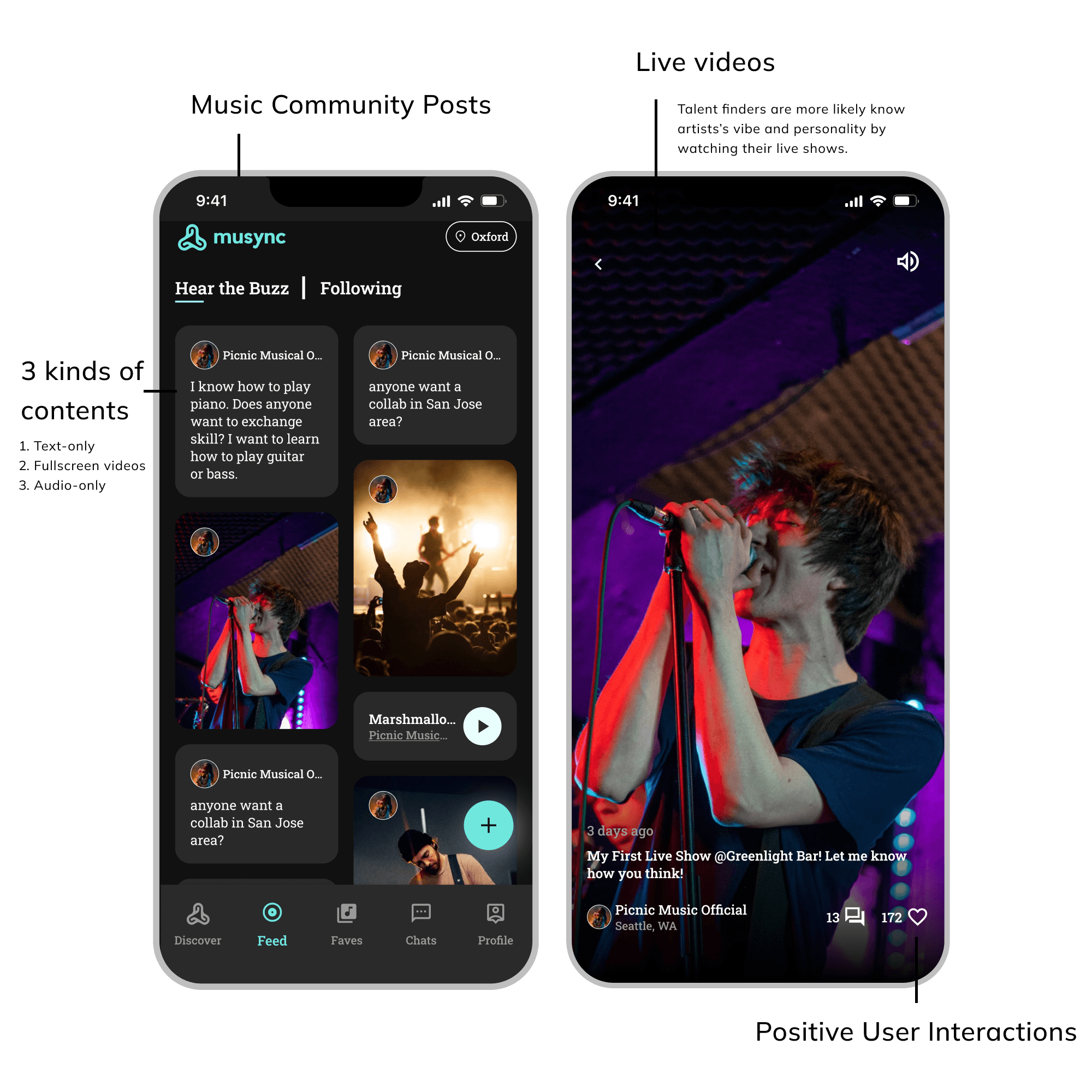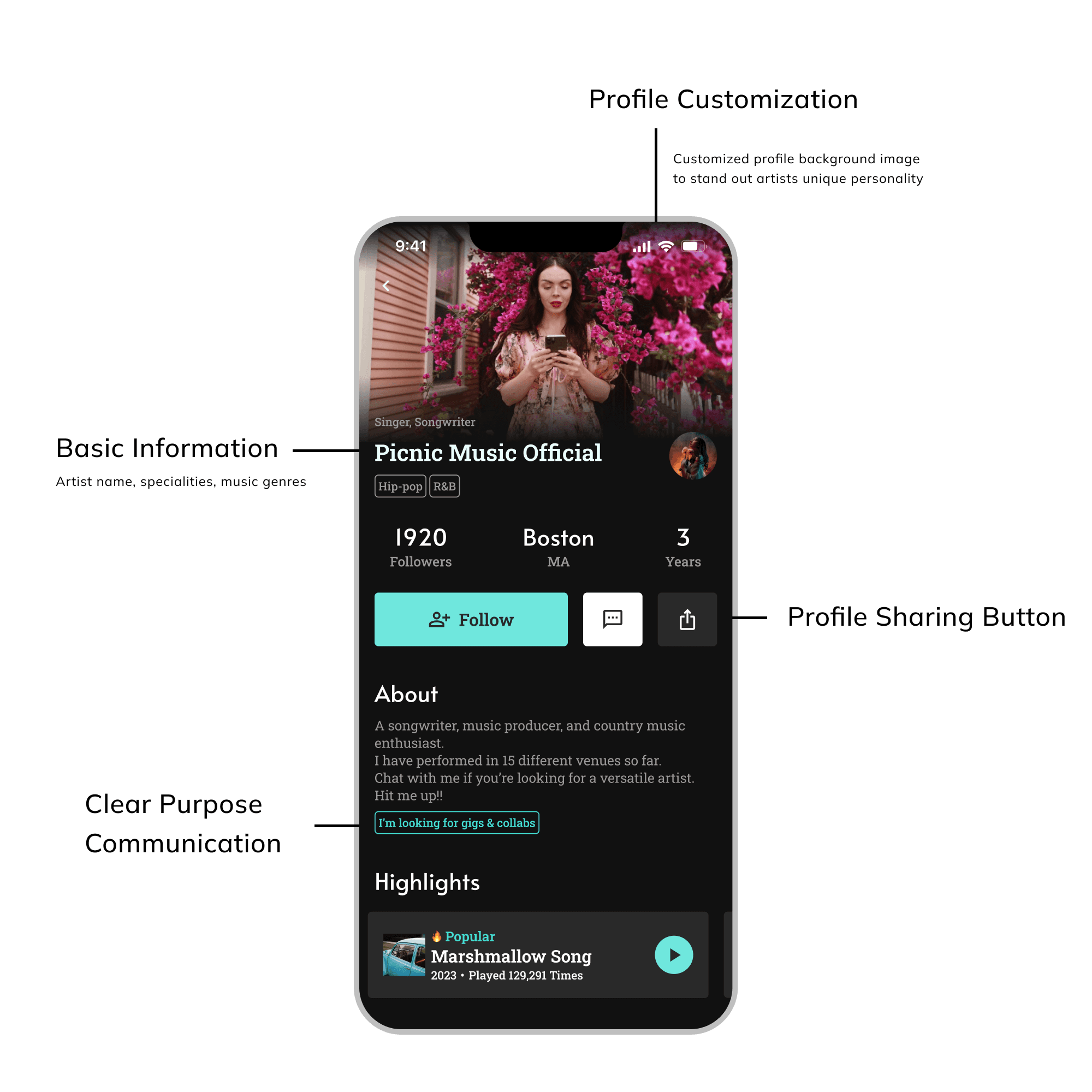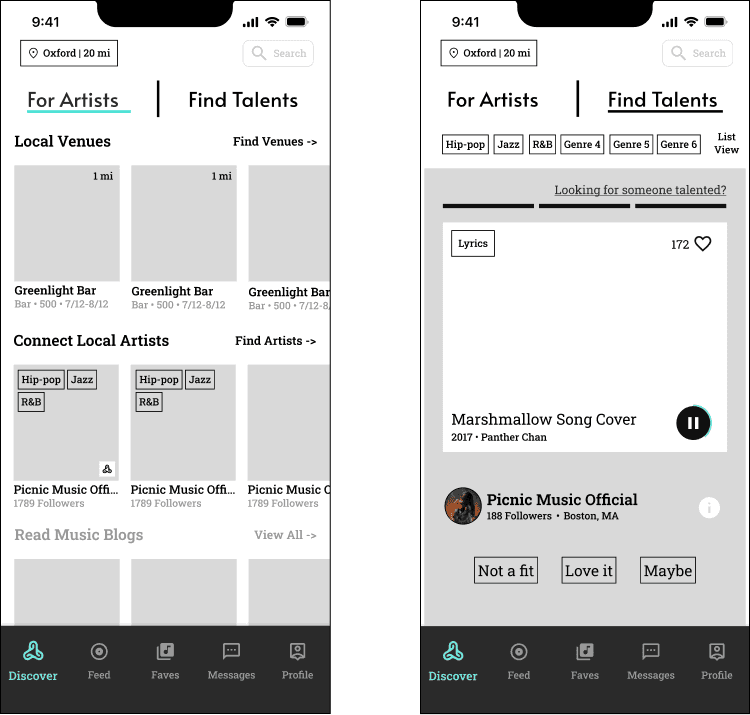
Network to Grow, for Early Career Musicians.
What did I deliver?
A Social Networking Platform for Early Career Musicians.
What is Musync? It connects early career musicians together and help them land more music shows opportunities.
The mission is to empower early-stage music artists. Personal branding or gig seeking, Musync helps artists grow and thrive.
What was the issue, Dear?
While experienced ones are being valued and promoted, early-stage music artists have few little channels to grow their career.
“75K artists, 3K venues, 5K+ bands booked” - Gigmor reports.
“In the Spotify era, many musicians struggle to make a living.” - Travis M. Andrews, The Washington Post Feature writer
“(...) generated €11.72 billion revenue in 2022, a 21% increase year-on-year” - one of the competitors
*Secondary Market Research
Early-stage musicians have a passion to produce fantastic music, yet lacking chances to be on the stage or distribute their music around to the world.
Whom did I design for?
Early-stage Music Artists
The unique challenge for these people is that, like many of us, they are at their early careers, not knowing how to make a good connection and then grow their music career.
What Did I discover in UX Research?
Focus on User Needs, Not Competitors
Competitive analysis and market research showed me that there was a big market in the music industry and even some direct competitors already existed, such as booking agency, had already focused on the similar challenges.
Thus, to avoid direct competition and be innovative, I dug deeper to learn about the unique problem spaces to solve. I interviewed with a music talent finder and a music artist who also happened to have prior booking agency working experience.
Research Objectives
I want to understand...
- the biggest struggles and frustrations of being an early-stage artist.
- the current process of finding and booking gigs
- what motivates them of being music artists.
Interview Questions
- What is your experience in trying to book gigs at venues?
- What challenges have you faced in trying to get yourself in front of venues?
- How do you typically find out about venues that you would like to perform at?
- Have you ever had trouble getting booked at a venue that you were interested in performing at?
- What were the reasons for this?
- What is your experience with working with booking agencies to find performance opportunities?
…….
1.Low confidence.
"The biggest challenge when I first started out was that I was not confident to put myself out there."
2.Ineffective reach-out.
"I only got 10-20% callback whenever I called the venues, which was very low to be honest."
3.Lack of personal branding.
EPK, Electronic Press Kit, serves as the music artist's professional resume. However, many young artists didn't have one to secure gig opportunities.
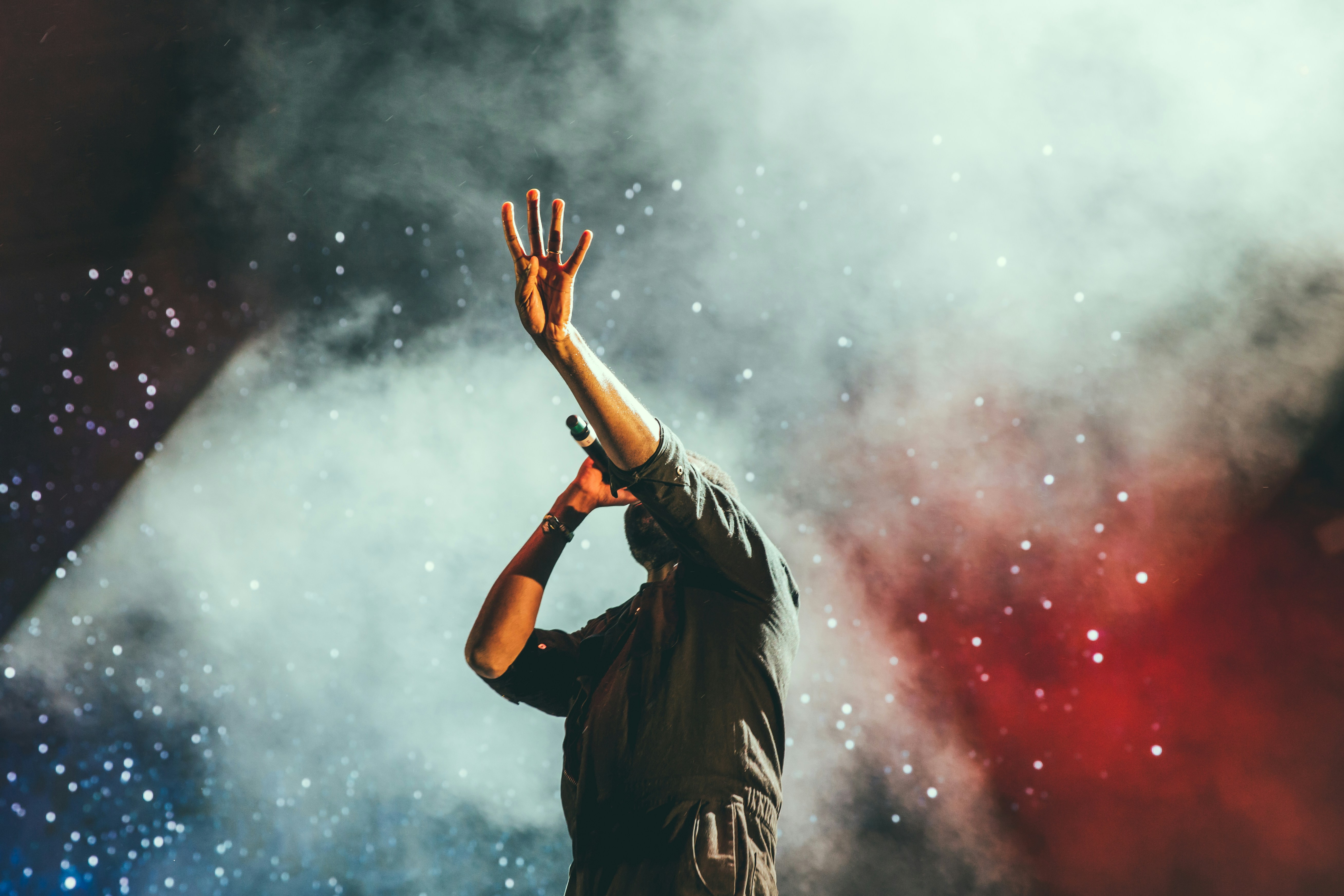
Problem Reframing
In summary, how might I help users improve their personal branding and outreach success, considering their lack of self-confidence?
Balancing is an art
Meanwhile, how to coordinate clients' requests and users' pain points became another road block.
As a sole designer, I aimed to bring Musync's MVP to life.
However, as it was an agency project, the biggest challenge was that there were loads of features requests from clients that needed to be done.
I had to bridge the gap between clients' requests and users' pain points.
I presented user insights to clients, and offered solid reasons for prioritizing.
In the discovery phase, I demonstrated my rationales of "must-haves" features supported by key user insights to clients to remove some redundant features at the MVP stage.
Key Solution 1
A supportive music community to encourage musicians to share their work.
Artists didn't see themselves talented because they saw everyone else as music masters. What if we build a forum community of young artists and let them see and support each other?
It was not only aimed to increase exposure of artists, but also to create a supportive network for Musync's users to boost self-confidence together.
Step 1. Brainstormed Ideas
How Might We help young artists build up their confidence to share their work publicly?
- Supportive music community.
- Ease up posting process.
- Positive feedback loop (when sharing work).
Step 2. Hand-drawn Layout Sketches
Step 3. Feed feature
Key Solution 2
Showcase unique personalities and music specialities.
Step 1. Brainstormed Ideas
Step 2. Design Explorations
Step 3. User Profile
Key Solution 3
A two-way reachout to keep the communications always on.
The traditional way of landing a gig was artists calling to the local venues directly. However, it was not very effective due to various reasons, unmatched music genres, wrong timing, or even venue owners being busy with work.
Step 1. Brainstormed Ideas
How Might We help early career artists create a professional branding via user profile?
- A formal EPK (Electronic Press Kit) for public sharing
- Easy to scan and grasp
- Keep track of artists' work
Step 2. Low-fi
Step 3. Discover Feature
I separated the Discover page into two parts:
"Reach out" lets artists find listed local venues and connect to other artists;
"Find Talents" allows talent finders to have a quick online music screening for potential artists.
In this way, I constructed a two-way channel allowing both parties reach out to each other at their own time to improve outreach success.
What were the impacts?
They loved it.
After I presented all the designs, the founders got excited and loved the experience I crafted.
They used the interactive prototypes to test it out, trying to see user reactions, and ended up receiving great positive feedback.
I even received appreciation on managing the entire design process with high productivity and delivered high quality design work with limited time and user data.
High Productivity
High Quality Design
After the project
Lessons Learned.
User Research Sampling: Due to the tight timeline, I only conducted a very small sampling user interviews. Although it gave me some surprisingly good results, it indeed was not statically representative to our target user group. Next time, if time is allowed, I will strive to extend it to involve at least 5 people to the interviews.
Networking Platform Design: Even though Musync is about early musicians, I referenced on diverse areas of apps to ideate solutions, such as Linkedin and Tinder. Essentially, they are all trying to solve one problem: how might we connect two group of people who need each other?

